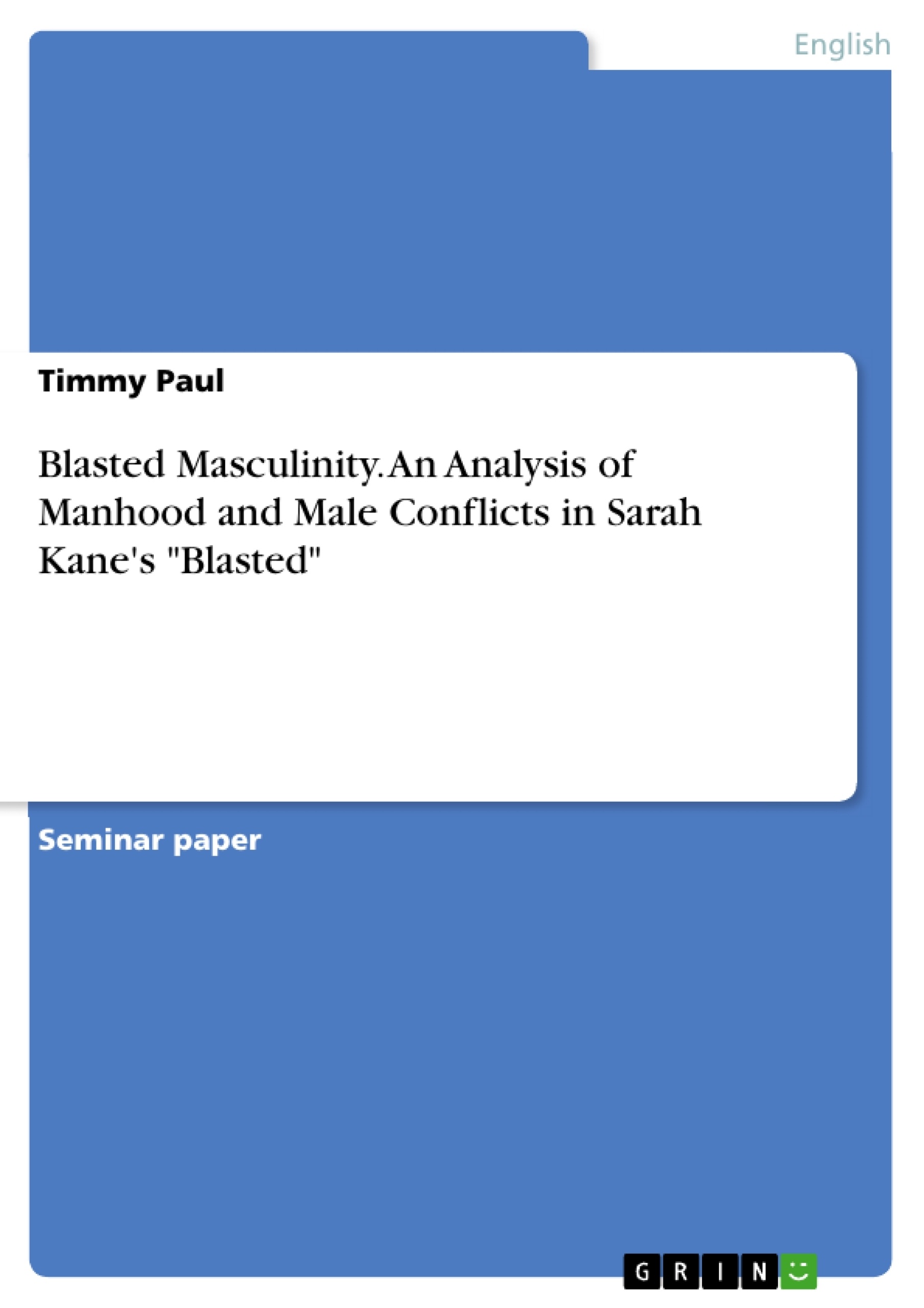What exactly is hegemonic masculinity? What are the characteristics of Ian's and the soldier's masculinities? What is the relationship between them? How is the representation of masculinity connected to the play's overall message?
The characters of Sarah Kane's play "Blasted" are two men and a woman. The plot begins in an expensive hotel room in Leeds, as Ian, a journalist who appears to be racist and abusive and Cate, his simple-minded, but good natured ex-girlfriend enter the stage. During the first two scenes, it is shown that Ian abuses Cate mentally and physically. He eventually rapes her off-stage. The scenes are clearly dominated by his male violence against her. The setting soon turns into an apocalyptic scenery, since Kane wanted to add an impression of the Bosnian War. (Saunders 38-39) As soon as the third character, the soldier, enters the stage, the violence reaches its peak. Ian, who was dominant and abusive until then, gets abused himself by the soldier, a truly cold-blooded, not to say purely evil man and hence is turned into an obedient and pitiable person, hardly with any bit of masculinity left. The quote from the beginning of this paper is the initiation of a process, that culminates in the destruction of Ian's masculinity.
In this paper, I would like to investigate this phenomenon. In order to do so, I will examine R. W. Connell's concept of hegemonic masculinity and compare it to the male characters in Sarah Kane's Blasted.
Inhaltsverzeichnis (Table of Contents)
- Introduction
- What is Masculinity?
- Definition of Masculinity
- The Concept of Hegemonic Masculinity
- Masculinity in Sarah Kane's Blasted
- Ian and Cate
- The Soldier and Ian
- Conclusion
Zielsetzung und Themenschwerpunkte (Objectives and Key Themes)
This paper aims to analyze the representation of masculinity and male conflicts in Sarah Kane's play "Blasted." It explores how the play portrays the destructive nature of hegemonic masculinity through the characters of Ian, Cate, and the Soldier. The analysis draws upon R.W. Connell's concept of hegemonic masculinity to understand the dynamics of power and domination between the characters.
- The impact of hegemonic masculinity on interpersonal relationships
- The destructive nature of male violence and its consequences
- The complexities of masculinity and its connection to power and dominance
- The exploration of masculinity in the context of war and violence
- The portrayal of vulnerability and the disintegration of traditional masculine norms
Zusammenfassung der Kapitel (Chapter Summaries)
The first chapter introduces the play and its controversial themes of violence and cruelty. It sets the stage for the analysis of masculinity by highlighting the play's central characters and their interactions.
The second chapter examines the concept of masculinity, focusing on R.W. Connell's definition and the different approaches to understanding its meaning. It explores the complexities of defining masculinity, challenging traditional notions and highlighting the cultural and social factors that shape gender roles.
The third chapter delves into the representation of masculinity in Sarah Kane's "Blasted," analyzing the characters of Ian, Cate, and the Soldier. It explores the different forms of masculinity displayed by each character, their relationships with each other, and the impact of their interactions on their sense of self.
Schlüsselwörter (Keywords)
The main keywords and focus topics of the text include hegemonic masculinity, male violence, gender roles, power dynamics, interpersonal relationships, war, and the representation of masculinity in theatre. The analysis centers around the play "Blasted" by Sarah Kane, exploring its themes of dominance, vulnerability, and the disintegration of traditional masculine norms in the face of extreme violence.
- Quote paper
- M.Ed. Timmy Paul (Author), 2020, Blasted Masculinity. An Analysis of Manhood and Male Conflicts in Sarah Kane's "Blasted", Munich, GRIN Verlag, https://www.grin.com/document/1169242




